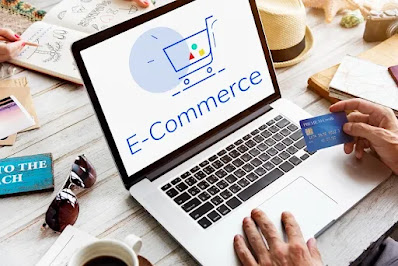Omnichannel Pillars to Take Your Marketing to the Next Level!
An omnichannel strategy makes possible seamless customer experience across all your sales channels. It includes both your brand's online and offline touchpoints, from a point-of-sale system to an Instagram shoppable post, and it's not just for retailers anymore.
This implies that your loyalty program will follow your customer throughout their journey, whether you're selling a line of leather goods on social media, in a pop-up shop, or online. Alternatively, you could operate a restaurant where customers can use QR codes to place orders both online and at the physical location. In this case, their experience will be connected at every stage.
Large businesses emphasize omnichannel, from sophisticated multitouch campaigns to great dining and in-store experiences. Small companies, however, can also participate in the omnichannel game and, with the Best Omnichannel Services Player, can increase sales manifold.
What is an omnichannel approach?
Businesses must deliver a unified and consistent brand experience across all sales and marketing channels to remain relevant, regardless of whether customers access these channels digitally, physically, or both. Bringing together your online and offline presence involves making connections. That is where a successful omnichannel strategy is put to use.
Although consumer expectations have changed, the definition of a successful omnichannel strategy has yet to be.
Buying at the online platform and collecting it online is known in the retail industry, which was the expectation for what three years ago was considered omnichannel. Now, that is merely a given.
An actual omnichannel strategy is now for more than just retail; restaurants are a prime example. Omnichannel has significantly advanced in the restaurant industry. "At this point, you're speaking of a single ordering platform that enables you to perform on-demand delivery, order pickup, and shipping all on one platform."
There isn't a better illustration of omnichannel than a single platform that can be used for pickup, delivery, and in-person dining, asks the speaker.
The definition of an omnichannel strategy that generates value for businesses is that connection is made possible by a centralized platform that stitches together an integrated experience.
What four elements make up an effective omnichannel strategy?
It's critical to comprehend the components that can help you give customers what they expect while also presenting opportunities to charm and surprise them before we discuss how to develop your omnichannel strategy.
Four critical components, according to Best Omnichannel Services Player for an effective omnichannel strategy are listed below:
Sales
Your omnichannel strategy is directly influenced by your sales strategy, which can also aid in prioritizing the channels that will best serve your target audience.
Marketing
You want your marketing messages to appear the same across all your channels. Customers feel more in touch with your brand on each track you appear on if your omnichannel marketing strategy is consistent.
Logistics and order fulfillment
The only way to ensure that customers receive the items they purchased from you, be it a product or a meal, is through order fulfillment. It's a crucial component of the omnichannel experience and can support you in reinforcing your brand promise on the return trip.
Operations
You need a system connecting all channels to use omnichannel effectively. Integrated tools that cooperate can assist you in making your omnichannel ideas a reality.
An omnichannel selling strategy can help you reach more customers and deepen their loyalty by making the experience with your brand feel consistent and accessible. And it’s an approach that’s a natural fit for small businesses since the levers and tools that can help you tie your channels together are already within reach.
High-quality, engaging content is essential for instilling trust across channels, answering customer inquiries, and educating them. You'll sell more products if you can produce content that more convincingly explains why working with you is a wise decision.
Content marketing campaigns come in various formats, including blog posts, social media posts, how-to guides, client testimonials, and live-stream videos. Video content performs well on social media, is fascinating to watch, and aids in SEO. Launch a video series of tutorials highlighting your area of expertise, or consider making explainer videos for your core goods or services.
Incorporate social media into your in-person experience as much as possible.
Displays in dressing rooms that allow customers to read product reviews of the items they are trying on are valuable to other try-before-you-buy strategies. You can entice customers by offering rewards for posting photos of their purchases or meals on Instagram. You could also install screens that show a real-time social media feed about your business or products.
Further advancement of your omnichannel strategy is possible with the help of QR codes. In addition to sharing information about the creators and chefs behind products and simulating the atmosphere of an in-store experience, businesses can use QR codes in various inventive ways to engage with their clientele.



Comments
Post a Comment